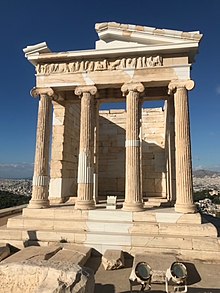
Preserving the Past: A Guide to Safeguarding Ancient Structures
Ancient structures stand as silent witnesses to the rich tapestry of human history, each brick and stone telling a story of bygone eras. Preserving these architectural marvels is not just a responsibility but a commitment to safeguarding our cultural heritage for future generations. In this blog, we will explore the importance of preserving ancient structures and discuss effective strategies to maintain these timeless treasures.
Understanding the Importance:
Ancient structures serve as tangible links to our past, offering insights into the societal, technological, and artistic achievements of bygone civilizations. The preservation of these structures is vital for maintaining a connection to our roots and fostering a sense of identity and continuity.
Challenges in Preservation:
Preserving ancient structures comes with its own set of challenges, ranging from natural decay and environmental factors to human activities. Pollution, climate change, and urbanization can accelerate the deterioration of these structures, making it crucial to implement comprehensive preservation strategies.
Effective Preservation Strategies:
- Documentation and Research:
- Before implementing preservation measures, thorough documentation and research are essential. This involves understanding the historical context, construction techniques, and materials used in the structure.
- Conducting regular surveys and assessments helps identify vulnerabilities and informs the development of effective preservation plans.
- Conservation Planning:
- Develop a conservation plan that outlines the specific goals and methodologies for preserving the structure.
- Consider factors such as environmental conditions, structural stability, and the use of appropriate materials to ensure a holistic approach.
- Restoration with Care:
- When restoration is necessary, it should be carried out with utmost care to maintain the authenticity of the structure.
- Use traditional building techniques and materials whenever possible to ensure compatibility with the original construction.
- Preventive Maintenance:
- Implement a proactive maintenance program to address potential issues before they escalate.
- Regularly inspect and repair structural elements, address water damage, and control vegetation growth in and around the structure.
- Climate Control:
- Control the indoor climate to prevent extremes of temperature and humidity, as these can contribute to the deterioration of materials.
- Install HVAC systems and moisture control measures to create a stable environment within the structure.
- Community Engagement:
- Involve the local community in preservation efforts to foster a sense of ownership and responsibility.
- Educate the public about the historical significance of the structure, encouraging a collective commitment to its preservation.
Conclusion:
Preserving ancient structures is not merely about saving stones and mortar; it’s about safeguarding the essence of our shared human history. By implementing thoughtful and sustainable preservation strategies, we can ensure that these architectural wonders continue to inspire awe and admiration for generations to come. Our commitment to preserving the past is a testament to our respect for the roots that anchor us in the present.






